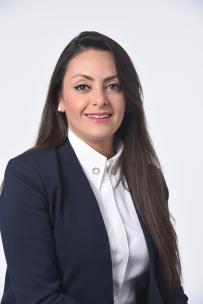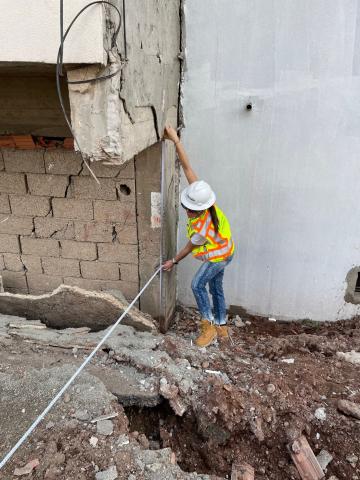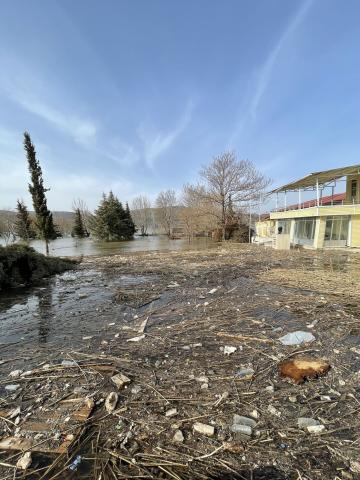I was 13 years old and living in Ankara, Turkiye, when the Kocaeli earthquake hit in 1999.
The impact of the earthquake to me was both unfathomable and very real all at the same time – it lasted less than one minute but affected a third of my country’s population, killing and injuring tens of thousands and leaving hundreds of thousands homeless. 1
For me, and millions of others, the magnitude 7.8 and 7.7 earthquakes that struck Turkiye on February 6, 2023, killing more than 50,000 people and injuring over 130,000, was like history repeating itself – except this time it was much worse.2
Were we better equipped to deal with an earthquake of this magnitude this time around? Situated on the Anatolian plate, bordering two major fault lines, one would hope that we learned some lessons from the 1999 Kocaeli earthquake. I had certainly learned a lot in the interim, having dedicated my academic and professional life to geotechnical earthquake engineering, but the aftermath of the February 6 earthquakes indicated that the construction and inspection practices as well as the emergency response in the region hadn’t progressed sufficiently since the Kocaeli earthquake.
Let’s go back to the start
The 1999 earthquake was the catalyst for me to pursue a career in engineering – I wanted to help make our communities more resilient to natural disasters. I was the only girl in my class who wanted to be a civil engineer but was told it wouldn’t be the right fit. Being told I couldn’t do it only made me more determined to pursue it. Today, I have a PhD in civil engineering, specializing in geotechnical earthquake engineering, a fulfilling and meaningful career and the opportunity to actively contribute to the advancement of the geotechnical earthquake engineering practice and resiliency of our communities.
I dedicated a great deal of time during my master’s degree to analyzing the Kocaeli earthquake. As an undergraduate, learning that thousands of lives might have been saved if the structures had been designed with a basement to minimize liquefaction-induced hazards, catalyzed my interest in this field. When conducting research for my master’s degree, I looked at one of the main factors for the failures caused by the Kocaeli earthquake – the phenomenon of soil liquefaction. Liquefaction is a phenomenon where the soil loses its strength due to excess pore water pressures generated as a result of earthquake shaking, so it starts acting like a liquid, rather than solid. During my doctorate, I focused my studies on better predicting the level of ground shaking by probabilistically incorporating the site effects.
Professionally, I’ve provided technical leadership for challenging geotechnical earthquake engineering projects driving state-of-the-practice approaches in geotechnical earthquake engineering. I’m extremely proud to be able to contribute to the progress of the industry through serving on boards and committees. This includes participating on the National American Society of Civil Engineers (ASCE) 7 Building Code Committee to update the most commonly used building code in the U.S. to reflect the state-of-art and state-of-practice in earthquake engineering and seismic hazard design.
I consider volunteering for earthquake reconnaissance efforts to be one of the most impactful things I can do as a geotechnical earthquake engineer. I am on the Geotechnical Extreme Events Reconnaissance (GEER) advisory council and participated in geotechnical efforts with GEER after 2015 Nepal, 2017 Mexico City and most recently, 2023 Turkiye earthquakes. I also participated in an earthquake reconnaissance effort with the Earthquake Engineering Research Institute (EERI) Lifelines team after the 2023 Turkiye earthquakes.
Earthquake reconnaissance
After an earthquake, the evidence of seismic behavior – especially geotechnical evidence – is perishable, so the response to an earthquake has to be fast. Organizations like the nonprofits GEER and EERI I have volunteered with will often deploy teams of experts: An initial scout team usually goes to the affected area immediately after the earthquake and identifies where the main failures are observed, developing relationships with local experts and professionals to help; and the main team is deployed to the key areas of interest to make more detailed observations that can help advance the state-of-the-practice of earthquake engineering. With limited time on-site and often large areas affected by a major earthquake, teams are typically divided up to cover more ground. After a reconnaissance effort, the team will compile a report to document their field observations, which provides researchers and professionals with data to conduct further research and analysis.
This sounds practical – almost clinical – but the reality is that you’re likely to be working in extremely tough conditions, meeting people whose lives have been torn apart in a matter of seconds. People who, despite the devastation they just went through, shared a glass of tea and their memories with us in Turkiye this year.
Turkiye earthquakes, February 6, 2023
I volunteered with two reconnaissance teams on two post-earthquake research studies, spending many days in an area affected by the earthquakes. Each day we started early and finished late as there was so much ground to cover.
One of the locations we visited was Golbasi, Adiyaman, located around 30 miles northeast of Pazarcik, Kahramanmaras, the epicenter of the 7.8 Magnitude main shock. Golbasi suffered from significant liquefaction-induced damage following the earthquakes. Our team collected drone imagery and made measurements across a line of buildings, some of which experienced up to almost three feet (90 centimeters) of settlement following the two earthquakes, meaning they had moved this distance from their original position.
It was also important for us to meet locals, who knew the area best and could give us insight we wouldn’t otherwise have had. While inspecting buildings in Golbasi, which means “by the lake” in Turkish, we met the community’s religious leader and his wife, who asked if we’d visited the school that slid into the lake. We hadn’t known about the school, so their insight enabled us to collect important perishable data and a unique case study.
As we walked into the school, we observed small-scale lateral spreading on the walkway and signs of surface waves. Lateral spreading is caused when an earthquake causes soil to move away from its original position and surface waves when an earthquake causes an acoustic energy wave to travel close to the earth’s surface. As we came close to the school, we observed massive lateral spreading that resulted in meters of vertical and horizontal displacement – resulting in the school and a significant portion of the shoreside end up underwater.
There are many other villages, towns and cities like Golbasi that were affected. Each one has its own story to tell – and many inhabitants sadly will never be able to finish their own stories.
Where we go now
I truly believe that engineers have a crucial role to play in shaping the future and changing the world. In the case of Turkiye, we not only have lots to learn from the geotechnical earthquake engineering data gathered from the reconnaissance, but also to build back better, designing critical infrastructure and cities and places in such a way that the impact of natural disasters is greatly reduced, and people are safer. While we couldn’t prevent the extensive damage or the devastation, hopefully we will learn from it and help advance the state-of-the-art and practice of earthquake engineering.
The building codes we use such as ASCE 7 in the U.S., the International Building Code and similarly the Turkish Earthquake Code, requires that general (non-critical) structures like buildings satisfy life safety for one design event (ie. an earthquake that tests the design of the building) during their lifetime. Life safety design means following a design where earthquake-level shaking of a building can cause heavy damage but it would still stand, enabling the inhabitants to get out safely after one design event. If the structure is heavily damaged and uninhabitable after a design earthquake, but its design enabled people to get out, it satisfied the life safety and code requirements.
Of course, our priority is always preventing loss of life, but what about the aftermath? Currently, more than 2.5 million people in Turkiye are displaced – people have lost their homes and are living in tents or containers, which in turn brings its own challenges. If their homes didn’t collapse after both earthquakes but are uninhabitable, they need to demolished, debris needs to be removed and they need to be rebuilt – a whole cycle that has significant climate impacts and astronomical monetary cost. The World Bank has estimated that the earthquakes caused in excess of $34 billion in direct physical damage in Turkiye.3
The February 6 earthquakes will not be forgotten. We owe it to the people whose lives were destroyed by these earthquakes to learn from what happened and to come out of this heavy devastation stronger. I hope we rebuild a country who covers the world media with its resilience against the next natural disaster to hit our geography, not the devastation.
About the author

Dr. Menzer Pehlivan is the regional lead of Jacobs’ U.S. northwest tunnel and ground engineering team, where she manages over 40 engineers across five offices. She also leads Jacobs’ Earthquake Engineering Community of Practice, which ensures the Jacobs team adopts advances in the constantly evolving earthquake engineering field to deliver state-of-the-practice solutions for clients. A strong advocate of inclusion and diversity, Menzer serves at several leadership positions advancing I&D within the industry and the company. She founded and served as the global co-chair of Jacobs’ OneWorld Employee network, which focuses on enhancing cultural intelligence and inclusion across the company. She holds bachelor’s and master’s degrees in civil and environmental engineering from Middle East Technical University in Ankara, Turkey, and a PhD from the University of Texas, Austin.

















































